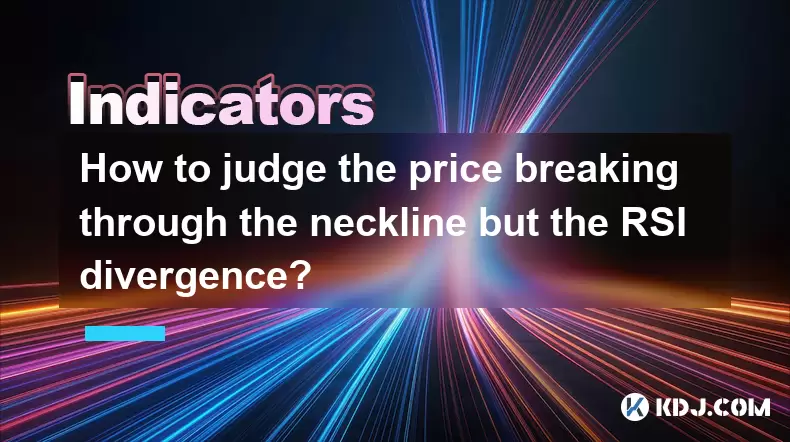-
 Bitcoin
Bitcoin $111,259.5910
2.32% -
 Ethereum
Ethereum $2,789.1977
6.17% -
 Tether USDt
Tether USDt $1.0006
0.06% -
 XRP
XRP $2.4172
3.88% -
 BNB
BNB $671.6585
1.21% -
 Solana
Solana $157.1336
2.90% -
 USDC
USDC $1.0001
0.02% -
 TRON
TRON $0.2913
1.52% -
 Dogecoin
Dogecoin $0.1809
5.04% -
 Cardano
Cardano $0.6213
4.40% -
 Hyperliquid
Hyperliquid $41.7572
6.29% -
 Sui
Sui $3.1623
8.35% -
 Bitcoin Cash
Bitcoin Cash $513.7819
1.17% -
 Chainlink
Chainlink $14.2966
1.64% -
 Stellar
Stellar $0.2904
9.82% -
 UNUS SED LEO
UNUS SED LEO $8.9624
-0.86% -
 Avalanche
Avalanche $19.4161
5.41% -
 Hedera
Hedera $0.1754
8.17% -
 Shiba Inu
Shiba Inu $0.0...01243
4.58% -
 Toncoin
Toncoin $2.8743
2.25% -
 Litecoin
Litecoin $90.6242
3.12% -
 Monero
Monero $328.7483
3.34% -
 Polkadot
Polkadot $3.6433
5.06% -
 Dai
Dai $1.0002
0.02% -
 Ethena USDe
Ethena USDe $1.0011
0.06% -
 Uniswap
Uniswap $8.3418
8.66% -
 Bitget Token
Bitget Token $4.4331
2.68% -
 Pepe
Pepe $0.0...01102
8.17% -
 Aave
Aave $297.1705
-0.69% -
 Pi
Pi $0.4712
1.31%
How to judge the price breaking through the neckline but the RSI divergence?
A neckline break in a Head and Shoulders pattern with RSI divergence may signal weak momentum, suggesting a potential false breakout.
Jun 29, 2025 at 07:57 pm

Understanding the Basics of RSI and Head and Shoulders Pattern
Before diving into how to judge a price breaking through the neckline with RSI divergence, it’s essential to understand two key components: the Relative Strength Index (RSI) and the Head and Shoulders pattern. The RSI is a momentum oscillator that measures the speed and change of price movements, typically on a scale from 0 to 100. It helps traders identify overbought or oversold conditions. Meanwhile, the Head and Shoulders pattern is a classic reversal pattern in technical analysis, composed of three peaks — the head and two shoulders — with a horizontal line (the neckline) drawn between the lows of the two shoulders.
RSI Divergence occurs when the price makes a new high or low, but the RSI does not confirm this movement.
Identifying RSI Divergence During Neckline Break
When the price breaks through the neckline of a Head and Shoulders pattern, it usually signals a potential trend reversal. However, if there's an RSI divergence, it adds complexity to the interpretation. To spot this scenario:
- Look for a completed Head and Shoulders pattern forming at a key resistance or support level.
- Observe whether the RSI fails to make a new high or low as the price does.
- Confirm that the price closes below (or above) the neckline, indicating a breakout.
If the RSI shows higher highs while the price makes lower lows, it suggests weakening momentum despite the breakout, which could signal a false move.
Analyzing Volume During the Neckline Break
Volume plays a crucial role in confirming any technical pattern, especially during a neckline break. When evaluating a breakthrough with RSI divergence, check the volume behind the move:
- A strong breakout should ideally be accompanied by increased volume.
- If the volume is weak or declining, even though the price breaks the neckline, it may indicate lack of conviction among traders.
- In cases where RSI divergence coincides with weak volume, it reinforces the possibility of a false breakout.
Traders must be cautious about entering positions solely based on a neckline break without considering volume and momentum indicators like RSI.
Confirming RSI Divergence with Price Action
To accurately assess whether a neckline break is valid despite RSI divergence, examine the price action closely:
- Look for candlestick patterns that suggest rejection of the breakout, such as long tails or engulfing candles.
- Check for retests of the neckline after the initial break. A retest that holds as resistance (or support) increases the validity of the pattern.
- Compare the RSI readings before and after the break. If the RSI remains in overbought or oversold territory without confirmation from price movement, it may indicate exhaustion rather than strength.
This kind of detailed observation can help traders distinguish between a genuine trend reversal and a deceptive market move.
Strategic Entry and Exit Points with RSI Divergence
Once you've identified a neckline break and confirmed RSI divergence, it's time to consider your trading strategy:
- Avoid immediate entry upon the first candle closing below (or above) the neckline.
- Wait for a pullback or retest to confirm support/resistance levels before entering.
- Place stop-loss orders beyond the recent swing high or low to protect against sudden reversals.
- Use trailing stops if the trade moves in your favor and RSI starts aligning with price action.
In situations where RSI divergence persists after the neckline break, it might be wise to take partial profits early or avoid the trade altogether.
Backtesting the Scenario for Better Understanding
Backtesting is an effective way to validate how reliable a neckline break with RSI divergence has been historically:
- Select historical charts of major cryptocurrencies like Bitcoin or Ethereum.
- Identify past Head and Shoulders patterns where the neckline was broken.
- Mark instances where RSI divergence occurred around those breaks.
- Analyze the outcomes — did the price continue in the direction of the breakout, or did it reverse?
By doing so, you’ll gain empirical insight into whether this confluence of signals is statistically significant or just noise.
Frequently Asked Questions
Q: What does RSI divergence mean in relation to the Head and Shoulders pattern?
A: RSI divergence indicates that momentum is not aligning with price action. In the context of a Head and Shoulders pattern, it may suggest that the expected reversal isn’t gaining strength, even if the neckline breaks.
Q: How reliable is a neckline break when RSI divergence is present?
A: A neckline break with RSI divergence tends to be less reliable. Traders should look for additional confirmation such as volume spikes, candlestick patterns, or retests before committing to a trade.
Q: Can I use other indicators alongside RSI to confirm a neckline break?
A: Yes, combining RSI with tools like MACD, moving averages, or volume indicators can provide more clarity. For example, a bearish MACD crossover during a neckline break could reinforce the likelihood of a downtrend.
Q: Is RSI divergence always a sign of a reversal?
A: No, RSI divergence doesn't guarantee a reversal. It simply signals that momentum is weakening. There are cases where the price continues despite divergence, so it should never be used in isolation.
Disclaimer:info@kdj.com
The information provided is not trading advice. kdj.com does not assume any responsibility for any investments made based on the information provided in this article. Cryptocurrencies are highly volatile and it is highly recommended that you invest with caution after thorough research!
If you believe that the content used on this website infringes your copyright, please contact us immediately (info@kdj.com) and we will delete it promptly.
- GMX Exploit: $42M Liquidity Pool Hack Exposes DeFi Security Flaws
- 2025-07-10 16:50:14
- FTX Bankruptcy Fallout: Tokens and Market Cap Under Scrutiny
- 2025-07-10 16:30:12
- ChatGPT, X, and Crypto Trends: Navigating the Hype in 2025
- 2025-07-10 16:50:14
- DXY Weakness: Is This the Bitcoin Breakout We've Been Waiting For?
- 2025-07-10 16:30:12
- LetsBonkFun Takes the Throne: A New Era for Solana Memecoins
- 2025-07-10 17:10:12
- Binance, Altcoins, and Futures: Navigating the Crypto Landscape Like a New Yorker
- 2025-07-10 16:55:12
Related knowledge

How to trade Dogecoin based on funding rates and open interest
Jul 07,2025 at 02:49am
Understanding Funding Rates in Dogecoin TradingFunding rates are periodic payments made to either long or short traders depending on the prevailing ma...

What is the 'God Mode' indicator for Bitcoincoin
Jul 07,2025 at 04:42pm
Understanding the 'God Mode' IndicatorThe 'God Mode' indicator is a term that has emerged within cryptocurrency trading communities, particularly thos...

Using Gann Fans on the Dogecoin price chart
Jul 07,2025 at 09:43pm
Understanding Gann Fans and Their Relevance in Cryptocurrency TradingGann Fans are a technical analysis tool developed by W.D. Gann, a renowned trader...

How to spot manipulation on the Dogecoin chart
Jul 06,2025 at 12:35pm
Understanding the Basics of Chart ManipulationChart manipulation in the cryptocurrency space, particularly with Dogecoin, refers to artificial price m...

Bitcoincoin market structure break explained
Jul 07,2025 at 02:51am
Understanding the Dogecoin Market StructureDogecoin, initially created as a meme-based cryptocurrency, has evolved into a significant player in the cr...

How to backtest a Dogecoin moving average strategy
Jul 08,2025 at 04:50am
What is a Moving Average Strategy in Cryptocurrency Trading?A moving average strategy is one of the most commonly used technical analysis tools in cry...

How to trade Dogecoin based on funding rates and open interest
Jul 07,2025 at 02:49am
Understanding Funding Rates in Dogecoin TradingFunding rates are periodic payments made to either long or short traders depending on the prevailing ma...

What is the 'God Mode' indicator for Bitcoincoin
Jul 07,2025 at 04:42pm
Understanding the 'God Mode' IndicatorThe 'God Mode' indicator is a term that has emerged within cryptocurrency trading communities, particularly thos...

Using Gann Fans on the Dogecoin price chart
Jul 07,2025 at 09:43pm
Understanding Gann Fans and Their Relevance in Cryptocurrency TradingGann Fans are a technical analysis tool developed by W.D. Gann, a renowned trader...

How to spot manipulation on the Dogecoin chart
Jul 06,2025 at 12:35pm
Understanding the Basics of Chart ManipulationChart manipulation in the cryptocurrency space, particularly with Dogecoin, refers to artificial price m...

Bitcoincoin market structure break explained
Jul 07,2025 at 02:51am
Understanding the Dogecoin Market StructureDogecoin, initially created as a meme-based cryptocurrency, has evolved into a significant player in the cr...

How to backtest a Dogecoin moving average strategy
Jul 08,2025 at 04:50am
What is a Moving Average Strategy in Cryptocurrency Trading?A moving average strategy is one of the most commonly used technical analysis tools in cry...
See all articles

























































































